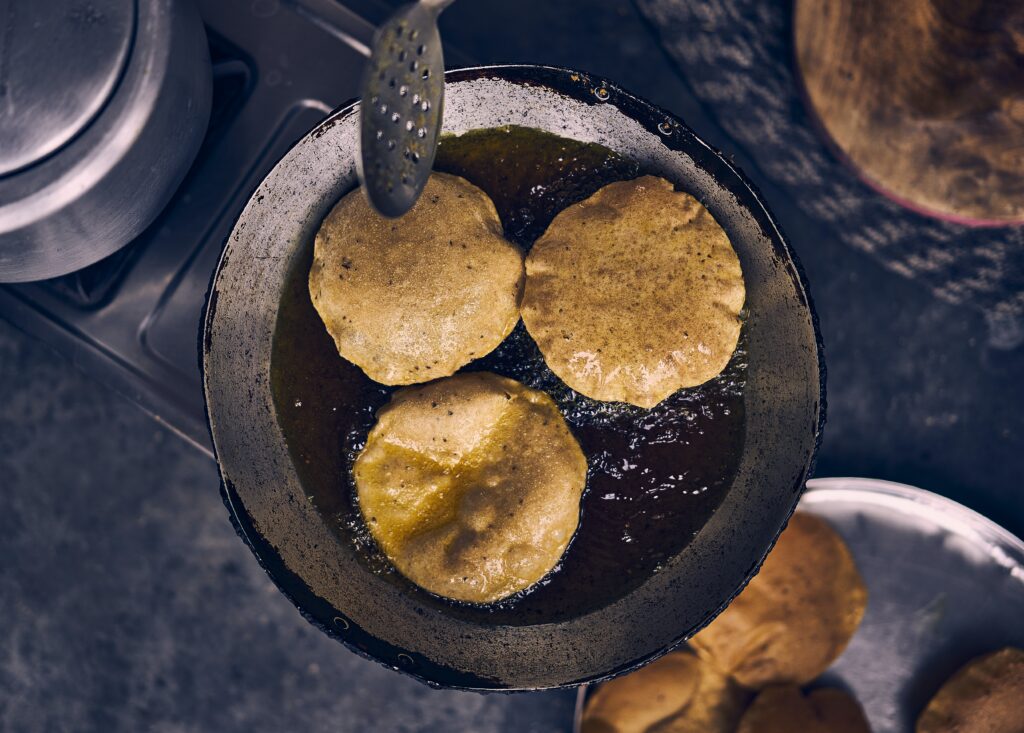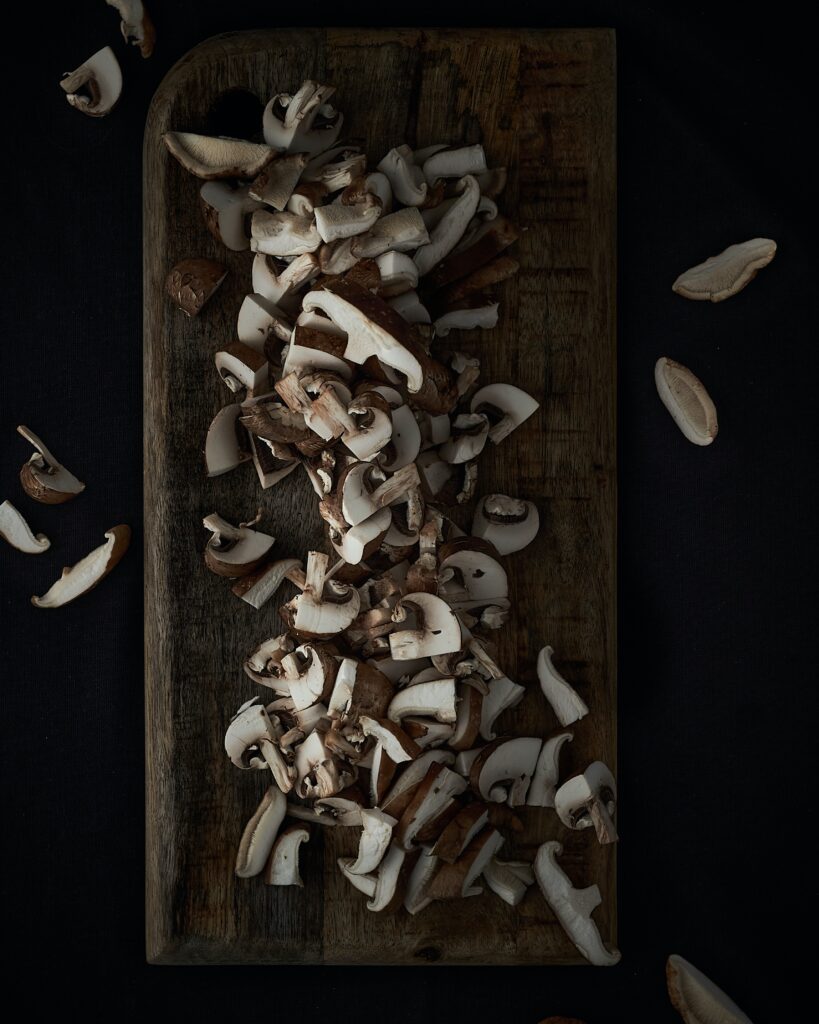Simmering is a gentle and slow cooking technique that is commonly used when preparing stocks, soups, and stews. By cooking food at a temperature just below boiling, simmering allows the flavors to meld together and enhances the overall taste. The temperature range for simmering typically falls between 185 to 205ºF (85 to 96ºC), and there are three levels of simmering: slow, regular, and rapid. It is important to simmer food uncovered until the heat becomes steady, as adding a lid can intensify the heat and lead to boiling. Unlike boiling, simmering involves fewer bubbles and less agitation. This method is particularly suitable for delicate proteins like fish and shellfish. Before simmering, it is recommended to bring the food to a boil in order to quickly heat it and accurately measure the temperature. To maintain a simmer, one should adjust the heat, use a flame tamer, and monitor the pot closely. Simmering offers several benefits, including tenderizing meat, infusing flavors, softening grains and vegetables, and retaining the nutritional value of the ingredients. The amount of liquid required varies depending on the recipe, and for stocks, it is important to add meat to cold liquid to prevent cloudiness. Simmering is applicable to various types of food, such as grains, legumes, vegetables, meat, fish, and stocks. To simmer effectively, one will need a large pot or saucepan and spoons for stirring and tasting.

Simmering Basics
Simmering is a cooking technique used for making stocks, soups, and stews. It is a way to cook food gently and slowly at a temperature just below boiling. Simmering allows the flavors of the food to mix together and enhances the taste. The temperature for simmering is usually between 185 to 205ºF (85 to 96ºC). There are three levels of simmering: slow simmer, simmer, and rapid simmer. It is best to simmer uncovered until the heat is steady, as adding a lid can intensify the heat and cause boiling. Simmering is different from boiling as it involves fewer bubbles and less agitation. Simmering is ideal for cooking delicate proteins like fish and shellfish.
Benefits of Simmering
Simmering offers several benefits when it comes to cooking various types of food.
One of the primary benefits of simmering is its ability to tenderize meat. Simmering meat slowly and at a lower temperature helps break down the connective tissues and collagen, resulting in tender and juicy meat.
Simmering is also great for infusing flavors into the food. As the food cooks slowly in the simmering liquid, the flavors from herbs, spices, and other ingredients are released and meld together, creating a rich and flavorful dish.
In addition to tenderizing meat and infusing flavors, simmering is also useful for softening grains and vegetables. Whether you’re cooking rice, lentils, or root vegetables, simmering allows them to soften gradually without losing their texture or nutritional value.
Speaking of nutritional value, simmering is a cooking method that helps retain the nutrients present in the food. Since the food is cooked gently and at a lower temperature, fewer nutrients are lost compared to other cooking methods like boiling or frying.

Preparing for Simmering
Before you start simmering, there are a few preparations to keep in mind to ensure successful results.
Firstly, it is recommended to bring the liquid or food to a boil before reducing the heat to simmer. This initial boiling helps to quickly heat the food, ensuring that it reaches the desired temperature for simmering.
Measuring the temperature is an important aspect of simmering. Using a thermometer, you can monitor the temperature of the liquid and make necessary adjustments to maintain a steady simmer.
The amount of liquid used in simmering depends on the recipe you are preparing. It is essential to have enough liquid to cover the ingredients adequately while also allowing for evaporation during the simmering process. Adding too much liquid can dilute the flavors, while too little can result in the food sticking to the pan or pot.
When adding meat to a simmering liquid, it is advisable to add it to cold liquid rather than hot. This helps prevent cloudiness in stocks and allows the meat to cook more evenly.
Tips for Maintaining a Simmer
Maintaining a simmer requires attention to the heat and the cooking process. Here are some tips for achieving and maintaining a simmer:
-
Adjusting the heat: To achieve and maintain a simmer, it may be necessary to adjust the heat on your stove. Depending on the stove and the size of the pot, you may need to increase or decrease the heat to maintain the desired temperature.
-
Using a flame tamer: If you find that your simmering liquid is boiling too rapidly, a flame tamer can be used to distribute the heat more evenly and reduce the intensity of the flame.
-
Keeping an eye on the pot: It is important to keep an eye on the pot while simmering. This ensures that the heat is maintained and that the liquid is simmering steadily. If the heat is too high, the liquid may start boiling, requiring adjustments to the heat source.

Simmering Various Foods
Simmering is a versatile cooking method that can be used for a variety of foods:
-
Grains: Simmering is an excellent way to cook grains like rice, quinoa, or barley. By simmering grains, they absorb the liquid gradually, resulting in a fluffy and cooked texture.
-
Legumes: Whether it’s beans, lentils, or chickpeas, simmering is an effective way to cook legumes. It helps them soften and break down, making them more digestible and easier to incorporate into various dishes.
-
Vegetables: Simmering vegetables is a gentle cooking method that preserves their texture and flavor. It allows vegetables to cook slowly and retain their nutrients while becoming tender.
-
Meat: Simmering is an ideal method for cooking tougher cuts of meat. As mentioned earlier, it helps tenderize the meat by breaking down the connective tissues. Simmering also allows the meat to absorb the flavors of the simmering liquid, resulting in a delicious and well-seasoned dish.
-
Fish: Cooking delicate proteins like fish and shellfish can be challenging, but simmering provides a gentle and precise method for these ingredients. It allows the fish to cook evenly without overcooking or drying out.
-
Stocks: Simmering is the foundation of making homemade stocks. By simmering bones, vegetables, herbs, and spices in water over an extended period, the flavors are extracted, resulting in a flavorful and aromatic liquid base for soups and sauces.
Tools for Simmering
To undertake simmering, it is essential to have the right tools:
-
Large pot or saucepan: Having a large pot or saucepan is necessary to accommodate the ingredients and the simmering liquid. The size of the pot should be suitable for the recipe or dish you are preparing.
-
Spoons for stirring and tasting: Simmering often requires stirring and regular tasting to ensure proper seasoning and doneness. Having spoons on hand for these tasks is essential for achieving the desired results.
Simmering is a versatile cooking technique that allows you to create flavorful and tender dishes. Whether you are preparing stocks, soups, stews, or various ingredients, understanding the basics of simmering, along with the benefits and tips for maintaining a simmer, will help you become a master of this gentle cooking method. So grab your pots, turn down the heat, and let the flavors meld together in a slow and simmering symphony of deliciousness.
